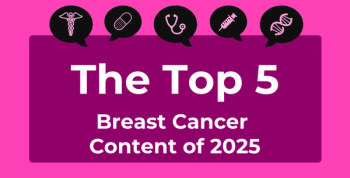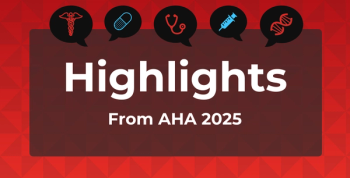
Historically Redlined Areas Face Inequities in Rapid EMS Care Access
Residents in historically redlined grade D areas were 1.67 times more likely to have no rapid access to EMS than in grade A areas, increasing their hazard risk of injury-related morbidity and mortality.
Historically redlined grade D neighborhoods have had lower access to emergency medical services than grade A neighborhoods, according to a new study published in JAMA Network Open.1
Redlining neighborhoods started in 1935 when the federal government commissioned the Homeowner’s Loan Association (HOLC) to color-code residential regions by grade, with A being considered the most desirable (green) and D the least desirable or “hazardous” (red).2 Residents in grade D neighborhoods were often denied loans or mortgages, which contributed to the widened racial wealth gap, as the majority of residents in these neighborhoods were African American or Hispanic. The new study aimed to find how the impacts of redlining and access to prehospital care affect patient outcomes and access to expeditious emergency medical service (EMS) care.1
Timely access to EMS services significantly affects patient outcomes, especially for those who have suffered from major trauma, stroke, cardiac arrest, or septic shock, the authors explained. There are national guidelines for effective treatment from EMS to hospital for various conditions, all of which recommend less than 60 minutes from the time a patient reaches the emergency department doors to the time they’re met with critical intervention. This recommendation, however, does not account for EMS transport to the ED, calls to dispatch EMS, nor EMS time spent on scene. Yet, all can be considered constituents of the “golden hour”—from the time of injury to arrival at a verified trauma center.
Researchers evaluated the location of ground EMS stations and ambulance services per capita across the United States using coordinate data from the Homeland Infrastructure Foundation-Level Data open-source database and the spatial distribution of EMS agencies across 236 US cities. Furthermore, using data from the 2020 US Census for population, out of the total US population (N = 333,036,755), 12.42% (n = 41,367,025) lived in cities with redlining data, and of them, 5.34% (2,208,269) lacked rapid access to EMS stations.
Shocking Comparisons Between Grade A and Grade D Neighborhoods
Patients in historically redlined districts also experience comorbidities that increase the hazard of mortality. More specifically, Black and Hispanic women in redlined areas were found to have increased rates of estrogen receptor-negative breast cancer diagnoses. Additionally, people in grade D neighborhoods were also more likely to be diagnosed with late-stage colon cancer when compared with those living in grade A neighborhoods.
When comparing HOLC A-grade to D-grade neighborhoods, 4.36% of grade A neighborhoods lacked rapid access to EMS, a little more than half of the 7.06% who lacked access in grade D areas. When segregated by region, the East region had the highest percentage of the population in grade D areas vs grade A (524,956 of 7,618,715 [10.91%] vs 51,173 of 956,757 [5.35%]; P < .001) without rapid access to EMS when compared with the West region (11,948 of 3,661,472 [0.61%] vs 0 of 323,684; P < .001).
Furthermore, areas lacking rapid EMS access had a significantly higher population density (5277.87 [95% CI, 13,281.7-17,274.04] persons/km²; P < .00), a lower percentage of non-Hispanic White residents (39.36% [95% CI, 36.99%-41.73%]; P < .001), and a higher percentage of non-Hispanic Black (27.85% [95% CI, 25.4%-30.3%]; P < .001) and Hispanic residents (21.58% [95% CI, 19.72%-23.44%]; P < .001). These areas also had a lower median income ($26,407 [95% CI, $24,358.31-$28,456.19]; P < .001), which researchers found surprising considering that compared with grade D areas, grade A areas had a higher Area Deprivation Index national percentile (38.82 [95% CI, 35.88-41.76] vs 43.20 [95% CI, 36.72-49.68]; P < .001) and a lower percentage of residents completing high school or greater (66.51% [95% CI, 56.17%-76.85%] vs 56.7% [95% CI, 53.62%-59.78%]; P < .001).
“The intersection of historical practices like redlining, rooted in structural racism, has significantly shaped inequitable structural determinants of health and perpetuated spatial injustice,” the study authors wrote. “Spatial justice combines social justice and geography, which aims to achieve equity in the allocation of resources within specific geographic areas.”
Actionable Solutions to EMS Station Locations Perpetuating Disparities
In addition to the sole use of the 2020 US Census for population statistics, further limitations included the estimated travel distance not accounting for call volumes, triage protocols, traffic conditions, road closures, etc.
However, it is still the first study to document the significant disparities related to historical redlining policies and the associated outcomes. In an attempt to combat decades' worth of structural racism, the study authors suggested tracking EMS equity measures for performance improvements, oversight to ensure spatial equity through historically redlined areas, new EMS stations, public EMS reports to ensure transparency of EMS access disparities, and state and federal funding to introduce spatial justice-based EMS redesign to ensure equity in rapid EMS care and access.
“These findings serve as a crucial call to action, urging investment in the prehospital system, strategic resource allocation and system redesign to address these inequities in prehospital emergency care, and the advancement of health policies designed to ensure equitable access to time-sensitive emergency care,” the authors concluded.
References
1. Berry C, Obiajulu J, Mann C, et al. Rapid access to emergency medical services within historically redlined areas. JAMA Netw Open. 2025;8(8): e2525681. doi:10.1001/jamanetworkopen.2025.25681
2. Tung EL, Peek, ME, Zakrison TL. Inequities in rapid access to emergency medical services within historically redlined areas. JAMA Netw Open. 2025;8(8): e2525684. doi:10.1001/jamanetworkopen.2025.25684
Newsletter
Stay ahead of policy, cost, and value—subscribe to AJMC for expert insights at the intersection of clinical care and health economics.









































